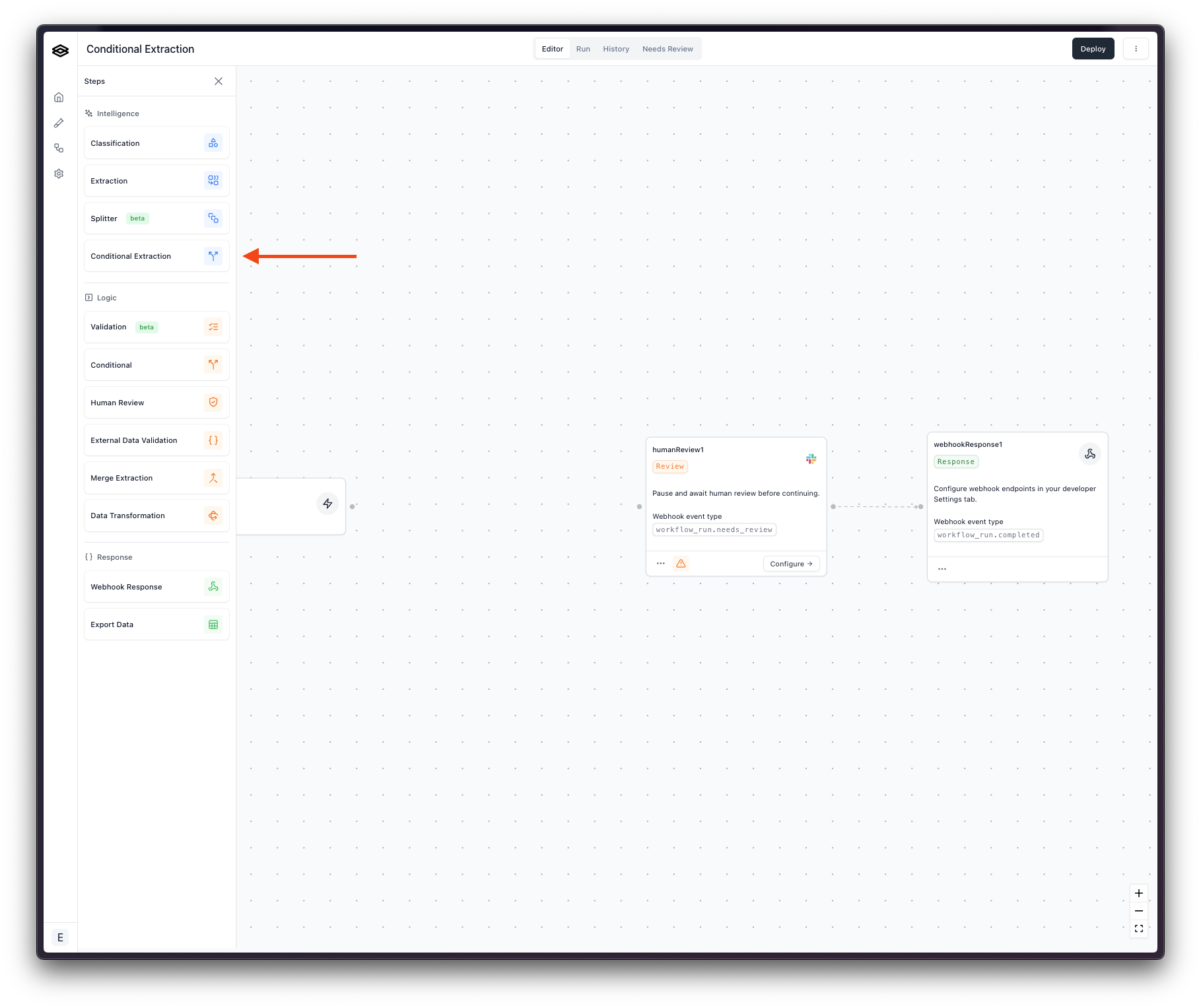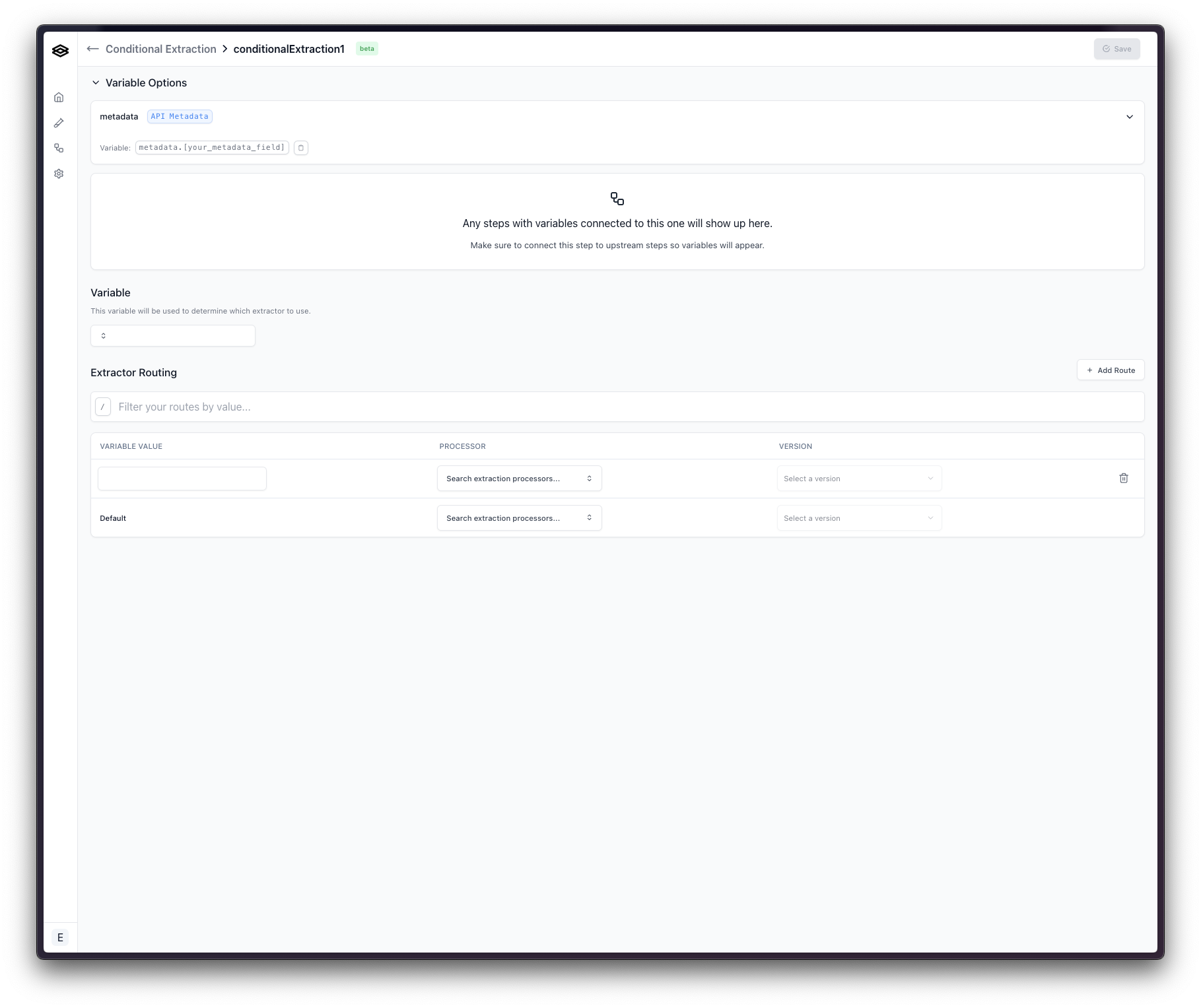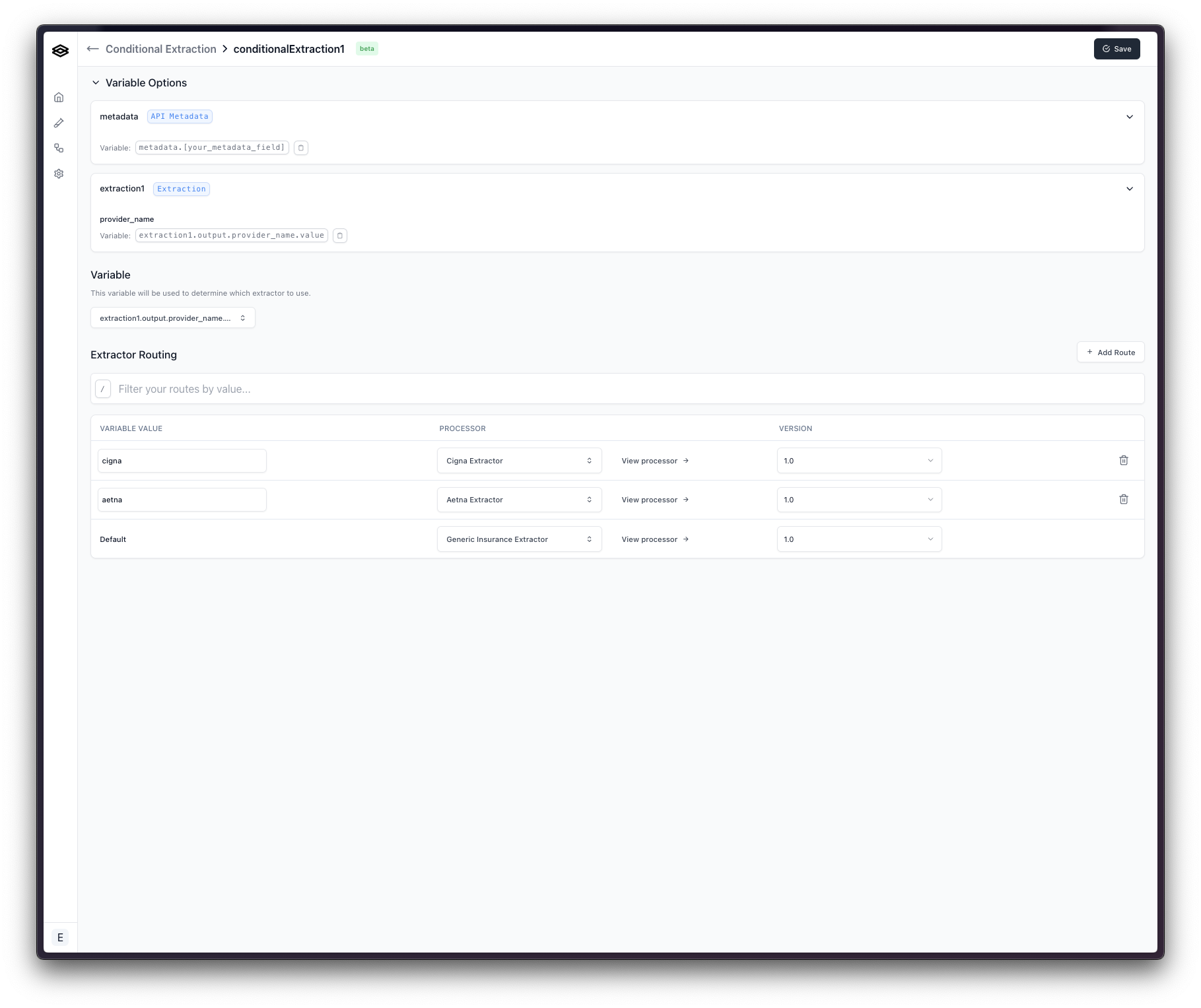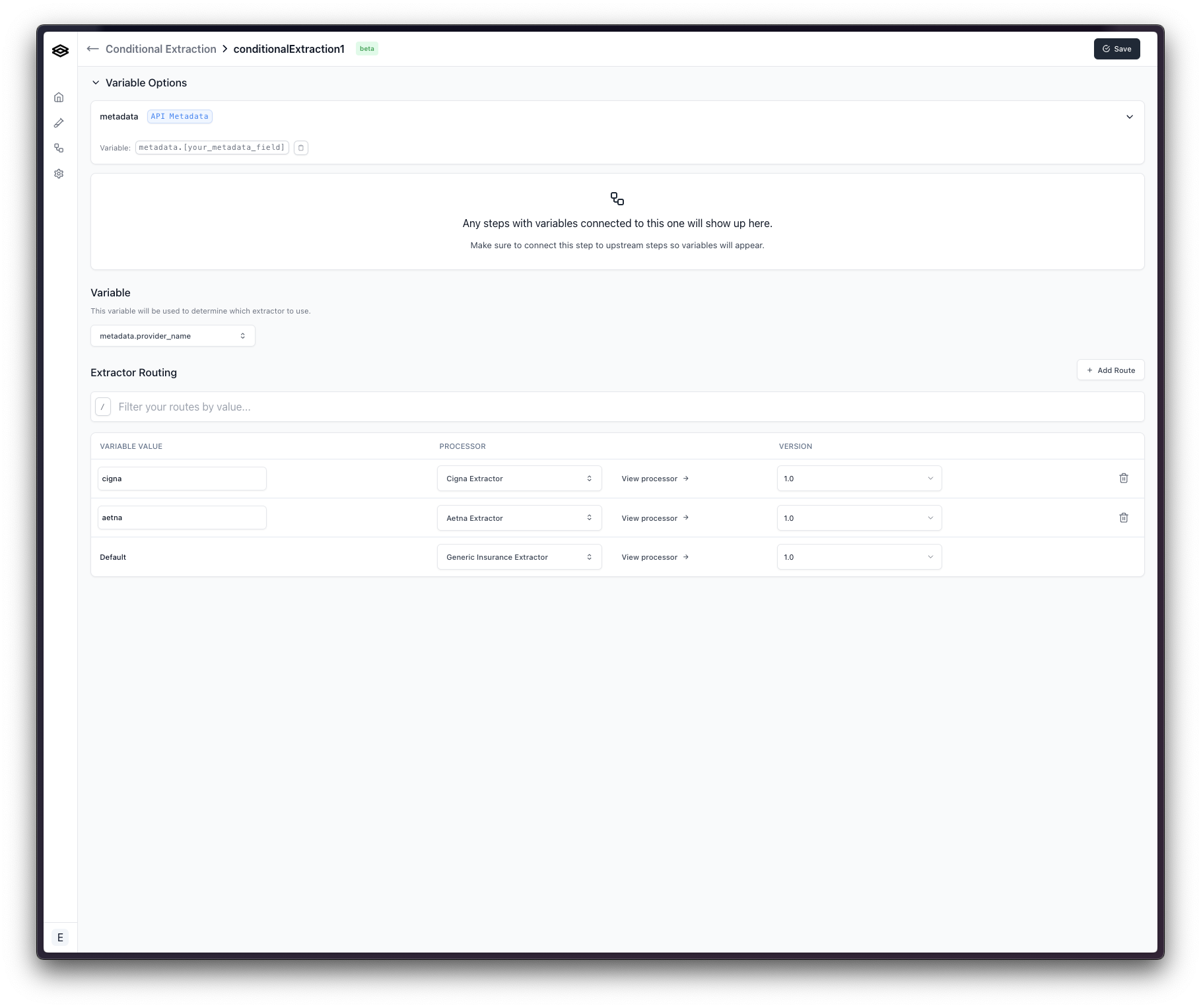Workflows
Conditional Extraction Step
How to use the Conditional Extraction step to dynamically route documents to different extractors.
This feature is not yet supported for the JSON Schema config type.
Use Cases
Common use cases for conditional extraction include:- Document Content-Based Routing: Route documents to specialized extractors based on previous steps results
- Metadata-Driven Routing: Use metadata you send in your API request to determine which extractor to use
Configuration
To configure the Conditional Extraction step, add it to your workflow and click the “Configure” button.
 The configuration has two main sections:
The configuration has two main sections:
1. Variable Selection
First, select the variable that will determine which extractor to use. Hook up the step to previous steps to have these variables available. You can choose from:- Variables from previous steps in your workflow
- Extraction outputs
- External Data Validation step outputs
- Classification outputs
- Metadata fields from your API request
2. Extractor Routes
Next, configure the routing logic by defining conditions and their corresponding extractors:- Add Routes: Click “Add Route” to create new conditional paths
- Define Values: Enter the variable values that should trigger each route
- Select Extractors: Choose which extractor and version should process documents for each condition
- Default Route: A default route is always required to handle cases where no conditions match

Example Extraction-Driven Routing Configuration
Here’s an example of how to configure conditional extraction based on a previously extracted field: Let’s say you have a lot of insurance documents and you want to route them to different extractors based on theprovider_name field.
- Set the variable to the
provider_namefield which will be available after you connect the extraction1 step:
extraction1 variable from the dropdown.
- Configure routes:
- If value equals “cigna” → Use Cigna Extractor v1.0
- If value equals “aetna” → Use Aetna Extractor v1.0
- Default → Use Generic Insurance Extractor v1.0

- Click “Save”
Example Metadata-Driven Routing Configuration
Here’s an example of how to configure conditional extraction based on a metadata field:- Set the variable to the metadata field
provider_namewhich you would send in your API request:
- Configure routes:
- If value equals “cigna” → Use Cigna Extractor v1.0
- If value equals “aetna” → Use Aetna Extractor v1.0
- Default → Use Generic Insurance Extractor v1.0

- Click “Save”

